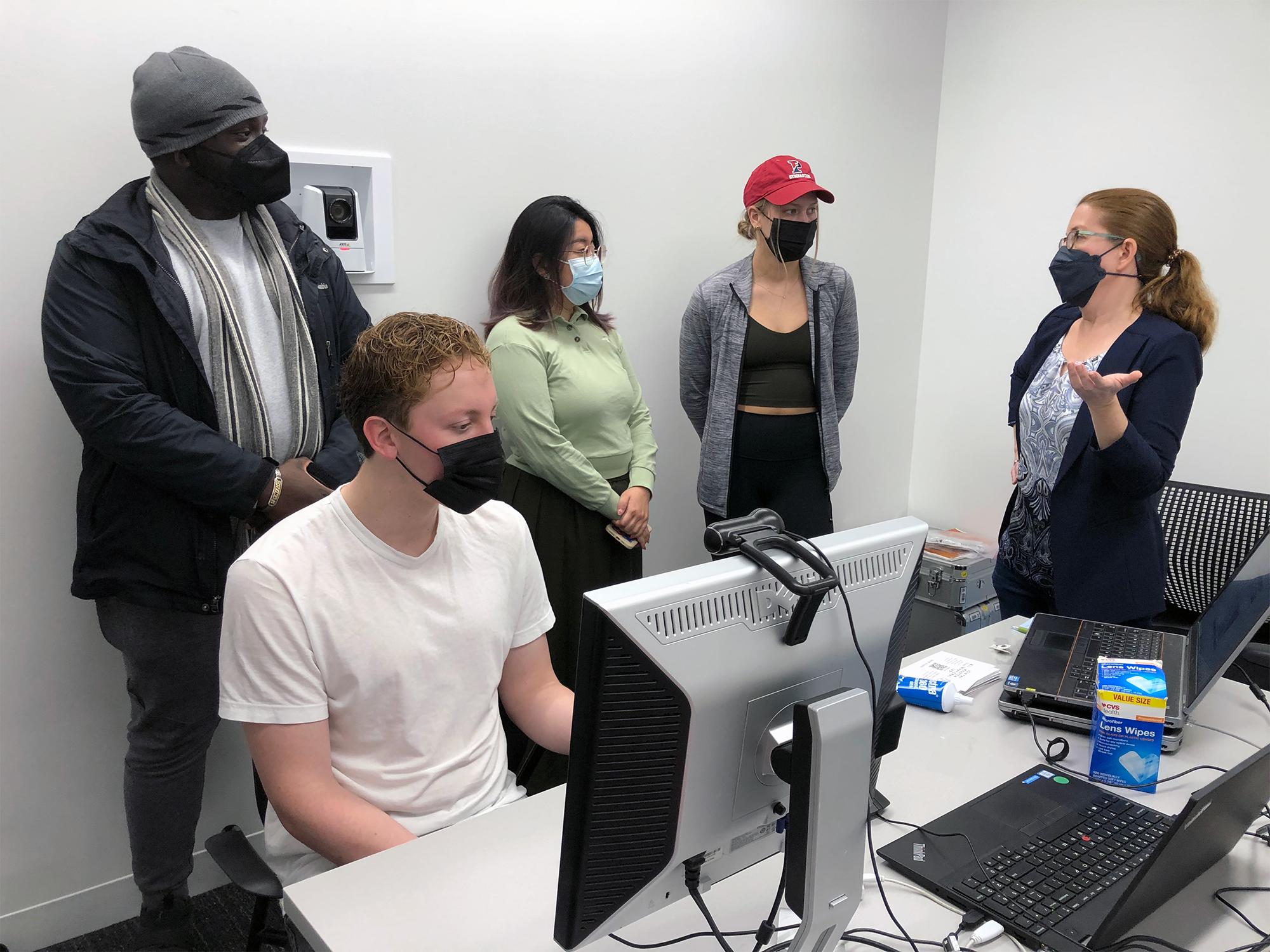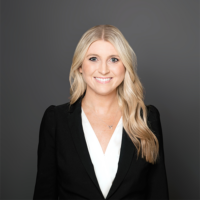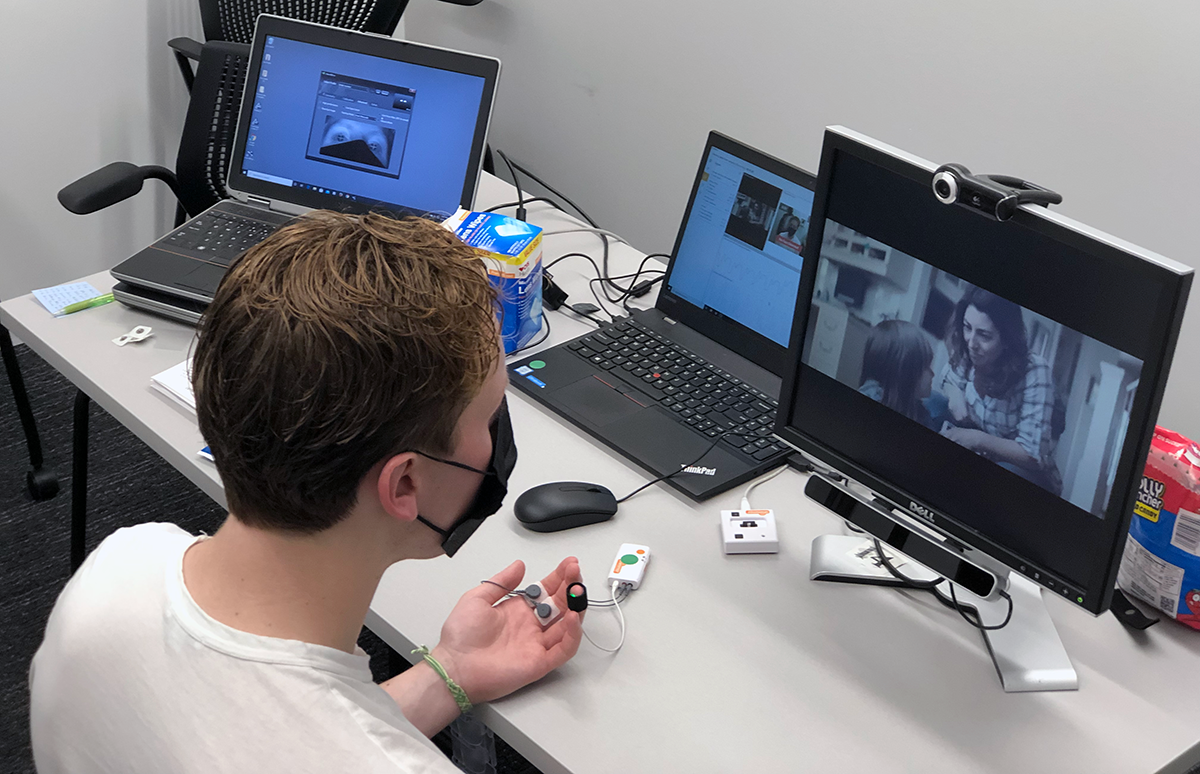Analytics at Wharton
Student Spotlight
Worlds Collide: Neuroscience and Marketing Meet in the Classroom

The Visual Marketing course is so popular at Penn that there isn’t enough space for all the students who sign up to take it each spring.
“We get more demand for the class than we have seats,” said Wharton marketing professor Barbara Kahn, who teaches the course with Elizabeth “Zab” Johnson, executive director of the Wharton Neuroscience Initiative.
Not bad for a class that came together by chance. A few years ago, the women were attending the same campus luncheon when Kahn noticed Johnson writing some notes to herself and asked what she was working on. Johnson, who was on the neurobiology faculty at Duke University before coming to Penn, told her that she was developing an idea for a course that would combine the principles of visual neuroscience with the practical applications of marketing. Kahn, whose research includes the sensory appeal of packaging, was instantly intrigued.
“We tuned everyone out and got into it,” Johnson recalled. “It sort of seemed like fate.”
The result of that fateful meeting is MKTG 239/739, a class that teaches students to understand visual cognition and how it influences consumer behavior and choice through marketing, advertising, packaging, and design. Now in its fourth year, Visual Marketing is open to graduate and undergraduate students from different disciplines across Penn – not just business majors.
MKTG 239/739: Visual Marketing
This class teaches students to understand visual cognition and how it influences consumer behavior and choice through marketing, advertising, packaging, and design. Now in its fourth year, Visual Marketing is open to graduate and undergraduate students from different disciplines across Penn – not just business majors.
The mix of students is intentional; the instructors want them to learn from each other’s different backgrounds and experiences. It’s not unlike the collaboration between the two instructors, who had to blend different teaching styles and research expertise. Johnson and Kahn said they continuously refine their course based on what they learn from working with each other.
“We’re acting out the collaboration that we want our students to do, and I’m watching how my material is improving by collaborating with another professor,” Kahn said. “That’s a discipline you don’t necessarily get when you’re teaching alone. There’s learning and there’s value in it.”
Johnson said it took a while for her and Kahn to find their pacing in class.
“In the first year, we were trying to separate the neuroscience and the marketing, and we realized what students want is integration,” she said. “I think we’re always trying to iterate. We’re constantly integrating new information, even if the overarching structure of the course doesn’t change.”
Getting Out of the Classroom
The Visual Marketing class starts with a 13-page syllabus that makes it clear the students won’t be spending all their time listening to lectures. Johnson and Kahn emphasize experiential learning, so they give assignments that get the students out into the real world. This semester, each student had to choose a store in Fashion District Philadelphia, go there as a customer, and evaluate the store layout and design based on what they learned in the course.
Kit Loughran, an MBA student in marketing and operations, visited fast-fashion retailer Primark. The chain is unusual in that customers cannot order online for home delivery, but they can consult the website to find products available at local stores. From her online search, Loughran knew her store had a specific shoe she wanted to wear to a concert, and she bought a handbag on impulse after seeing it paired with the shoes on a mannequin display.
“The assignment was to understand what the visual search journey is in the store and how that connects to the overall experience with that specific retailer,” she said. “I thought it was a really positive experience. It started with looking at their online catalog, and that set my expectations for going to the store. Even though this was a planned purchase, the outside location was primed for discovery shopping. It had signs outside, calling people’s attention to the store, and once you were inside, they had a lot of visual elements guiding people.”
Before enrolling at Wharton, Loughran spent five years in marketing at an advertising agency. After interning at PepsiCo this summer and graduating next year, she plans to pivot into brand management and said the class makes her think about innovative ways to drive a brand’s business.
“A lot of times, people think a brand’s creative or visual design elements just come to be somehow, but there is so much data and so much science behind it. Visual Marketing is a really interesting class for students to understand what strong visual and creative elements can do for a business.”

Kit Loughran, WG’23
MBA Student at The Wharton School
“A lot of times, people think a brand’s creative or visual design elements just come to be somehow, but there is so much data and so much science behind it,” she said. “Visual Marketing is a really interesting class for students to understand what strong visual and creative elements can do for a business.”
Classmate Jake Rodin, a junior earning a bachelor’s degree in economics, also said the course makes him think more deeply about marketing choices, like why off-brand products are packaged with similar colors and fonts as name brands. In class, he learned about representativeness bias, a mental shortcut people often use to judge similar objects.
“So, when customers see a cereal box that looks like Cheerios, they are likely to believe the two products taste similar. If the off-brand product is then priced lower, consumers may be more likely to then buy that product,” Rodin said.
He plans to intern this summer at investment banking firm William Blair and said the concepts he’s learned in Visual Marketing can even be applied to client pitches.
“There are so many subtleties behind presentation, and I believe that how these ideas are presented is just as important as the idea itself.”

Jake Rodin, W’23
Undergraduate at The Wharton School
“There are so many subtleties behind presentation, and I believe that how these ideas are presented is just as important as the idea itself,” Rodin said.
Visual Marketing students also visit the Wharton Behavioral Lab to experience the neuroscience and analytics ideas they talk about in the classroom. In one session, they use devices that track eye movement, code facial expressions, and measure the sweat on palms – all indicators of alertness and engagement with an advertisement or a product.
Johnson said the session gives students a deeper understanding of data because they see both how it is collected and how it is analyzed.
“My goal with this is to make the abstract concepts they are learning about in class come to life. The students are often surprised by what the technologies look and feel like, how you can actually see in real time where someone is looking, and how they are responding without having to verbally tell you,” she said.

Help From Hershey
Determined to make the course relevant beyond the classroom, Johnson and Kahn have partnered with The Hershey Company. Ryan Riess, who is vice president of brand strategy and creative communications at Hershey, has joined the class for the last three years to offer students real-data projects on the packaging and merchandising of Hershey products. In the first year, it was barkTHINS. Next came Kit Kat, and this year’s focus has been Jolly Rancher candies.
“I love the enthusiasm that they bring and the unbiased opinions. They’re a focus group that has training in visual language. There’s this perfect balance between innocent enthusiasm and intellectual rigor and curiosity. The marriage between those two is what makes it fun for me.”
– Ryan Riess, Vice President of Brand Strategy and Creative Communications at The Hershey Company
“I love the enthusiasm that they bring and the unbiased opinions,” Riess said of the students, likening them to a better-than-average focus group. “They’re a focus group that has training in visual language. There’s this perfect balance between innocent enthusiasm and intellectual rigor and curiosity. The marriage between those two is what makes it fun for me.”
Riess has worked for Hershey for 13 years and describes himself as someone who “lives and breathes” the brands, thinking about them day and night and talking with co-workers who do the same. That laser-sharp dedication sometimes results in an echo chamber, but the Visual Marketing students challenge him to break out of the bubble.
“They are asking questions, the answers to which I don’t know,” Riess said, like why Hershey bars are scored a certain way or why Jolly Ranchers are rectangular instead of cylindrical. “Those very innocent questions prove once again that you need to think about the normal [consumer] who isn’t thinking about your brand all the time.”
Each year, the students analyze eye-tracking data that is collected in a collaboration between Johnson and Hershey. This year’s assignment used real data on how consumers perceive Jolly Rancher packaging, social media ads, and how they search for the candy package on store shelves.
“Many of our students may go on to be marketers and brand managers, where they may encounter the standard data visualizations from these methods,” Johnson said. “This assignment serves to pull back the curtain and take a deeper dive so that students can better see and understand the actual data that’s collected, how questions and hypotheses can be asked, the limitations, and how these kinds of data can provide specific marketing insights.”
A Modern Approach
Johnson and Kahn want their students to have a modern approach to marketing, which means understanding all the visual components that have become even more important in the digital age, when so much brand information is conveyed via screens.
“Packaging has moved into our new storytelling area. In the past, it might have been your advertising or commercial. Now, the package is the way the brand is communicating with you. Think about this TikTok phenomenon of unboxing,” Kahn said, referring to wildly popular videos in which social media influencers show themselves unpackaging an item they have ordered.
“The components of the course make it such that we have to keep moving to keep up, but what ties it all together is the element of visual,” she said. “That’s our guiding principle. It gives us structure to the course that allows us to harness the creativity and diverse views.”
Johnson agreed, adding that old-school marketing research can be outdated.
“A lot of it is how people read banner ads or look through phone books. Our students are like, ‘What is a commercial? That thing you skip on YouTube?’” she said. “It’s time to embrace what is consistent, what is rooted in our biology, which is our visual perception and how we extract meaning from what we see.”
For Johnson, the Visual Marketing class holds a great deal of personal satisfaction.
“I love watching new ideas emerge,” she said. “I also learn a lot from students because they will bring examples to me or new findings, and that changes not just my science but my approaches. I think of it as this two-way flow, which I really appreciate.”
— Angie Basiouny

Wharton Neuroscience Initiative’s bold and comprehensive vision is to improve business, drive discoveries and new applications, and enhance the education of future leaders through the synthesis of neuroscience, psychology, business, technology, and analytics. Rooted in Wharton and spanning the entire University, the city of Philadelphia, and the industry at large, WiN engages with students, faculty, companies, government agencies, and nonprofit organizations to build better business through brain science.


